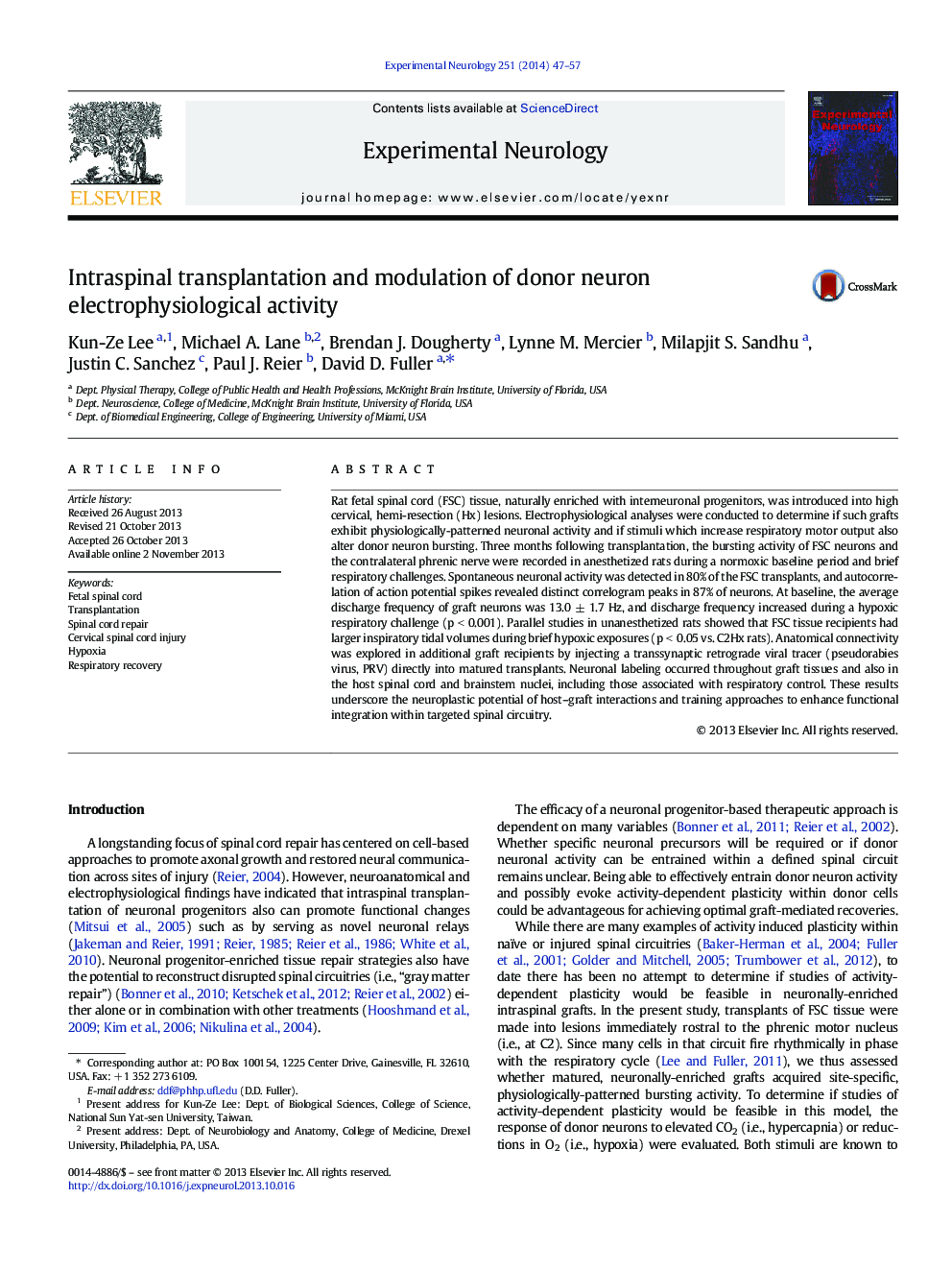| Article ID | Journal | Published Year | Pages | File Type |
|---|---|---|---|---|
| 6017895 | Experimental Neurology | 2014 | 11 Pages |
Abstract
Rat fetal spinal cord (FSC) tissue, naturally enriched with interneuronal progenitors, was introduced into high cervical, hemi-resection (Hx) lesions. Electrophysiological analyses were conducted to determine if such grafts exhibit physiologically-patterned neuronal activity and if stimuli which increase respiratory motor output also alter donor neuron bursting. Three months following transplantation, the bursting activity of FSC neurons and the contralateral phrenic nerve were recorded in anesthetized rats during a normoxic baseline period and brief respiratory challenges. Spontaneous neuronal activity was detected in 80% of the FSC transplants, and autocorrelation of action potential spikes revealed distinct correlogram peaks in 87% of neurons. At baseline, the average discharge frequency of graft neurons was 13.0 ± 1.7 Hz, and discharge frequency increased during a hypoxic respiratory challenge (p < 0.001). Parallel studies in unanesthetized rats showed that FSC tissue recipients had larger inspiratory tidal volumes during brief hypoxic exposures (p < 0.05 vs. C2Hx rats). Anatomical connectivity was explored in additional graft recipients by injecting a transsynaptic retrograde viral tracer (pseudorabies virus, PRV) directly into matured transplants. Neuronal labeling occurred throughout graft tissues and also in the host spinal cord and brainstem nuclei, including those associated with respiratory control. These results underscore the neuroplastic potential of host-graft interactions and training approaches to enhance functional integration within targeted spinal circuitry.
Related Topics
Life Sciences
Neuroscience
Neurology
Authors
Kun-Ze Lee, Michael A. Lane, Brendan J. Dougherty, Lynne M. Mercier, Milapjit S. Sandhu, Justin C. Sanchez, Paul J. Reier, David D. Fuller,
